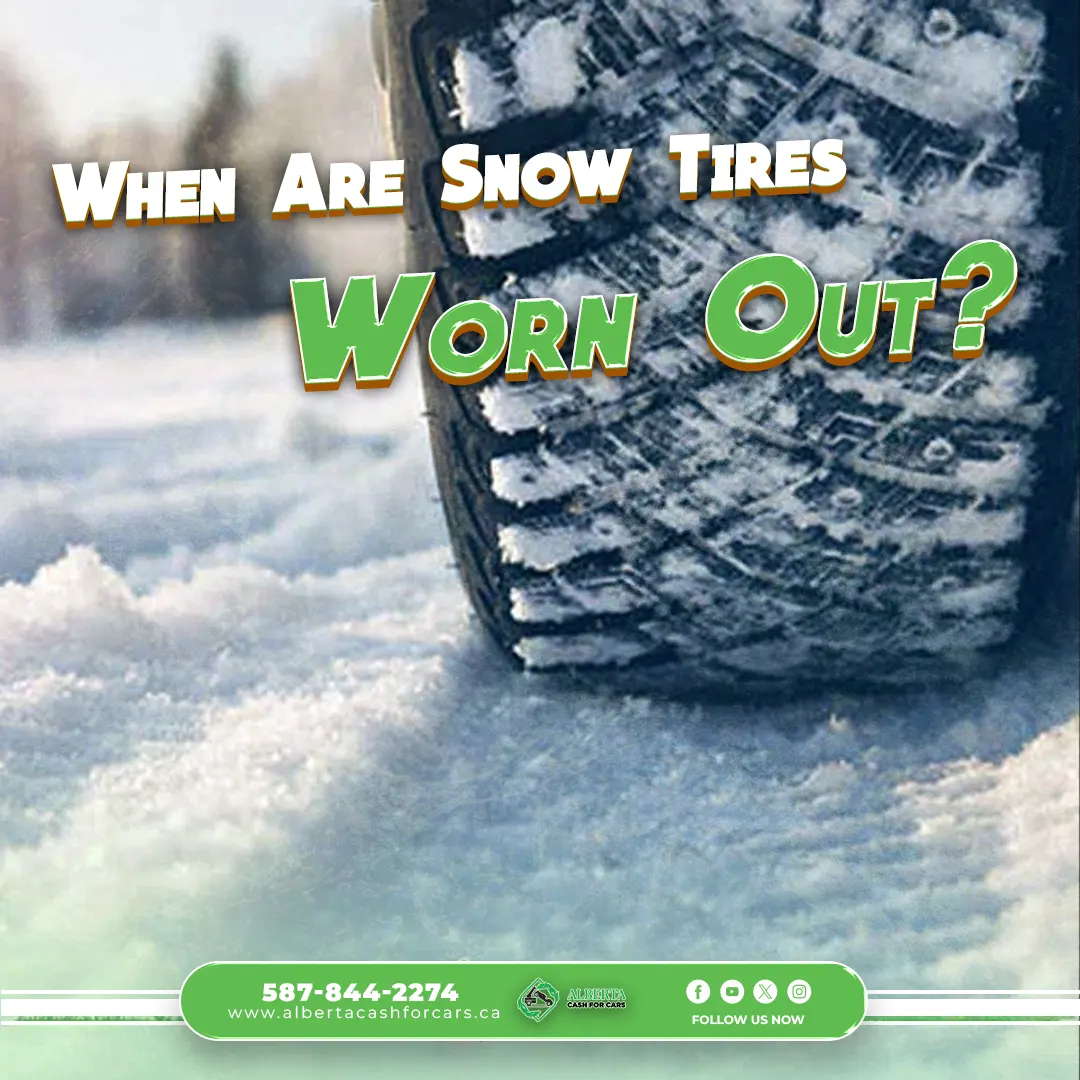Let’s face it, Calgary winters can be a wonderland one minute and a white-knuckled whiteout the next. We’ve all been there – cruising down Deerfoot Trail on a sunny February morning, feeling like champions of the road, only to have the weather take a nasty turn. Suddenly, those crisp corners and clear straightaways turn into a skating rink. That’s where your trusty snow tires come in!
But even the best snow warriors get tired (pun intended). Just like your favorite winter boots, snow tires have a lifespan. The question is, when are snow tires worn out and how can you tell it’s time for a new set? Don’t worry, we’ll navigate this snowy terrain together!
Imagine this: You’re heading home after a fun day skiing at Lake Louise. The roads are a bit slushy, but you’re feeling confident with your snow tires. Suddenly, you notice your car isn’t handling the way it used to. It feels like it’s skipping and sliding a bit more than usual. This could be a sign that your worn out winter tires have lost their grip.
Here’s the thing, snow tires are made with a special, softer rubber compound that stays flexible in cold weather. This allows them to grip the snow and ice much better than all-season tires, which harden up in the cold. But over time, that tread wears down, reducing their effectiveness. So, when are snow tires worn out and how can you spot the warning signs?
Signs for When Are Snow Tires Worn Out

So, when are snow tires worn out? There are a few key ways to tell if your snow tires are past their prime. Think of yourself as a winter tire detective, ready to crack the case!
The Tread Depth:
This is the big one! Snow tires, just like all tires, have built-in tread wear indicators. These are small raised bars across the grooves of the tread. When the tread wears down to the same level as these bars, that’s when snow tires are worn out.
Most snow tires have a tread depth of around 10/32nds of an inch when new. In Canada, Transport Canada recommends replacing winter tires when the tread depth reaches 5/32nds of an inch (around 4 millimeters).
The Penny Pinch Detective (But Not Really):
We’ve all heard the old trick of sticking a penny in the tread with Lincoln’s head facing down. If you can see the top of his head, it’s time for new tires. This trick can be a helpful reminder, but it’s not always accurate. For a more precise measurement, grab a tire tread depth gauge, readily available at most auto parts stores.
The Slipping and Sliding:
As mentioned earlier, if your car feels less stable and handles differently in winter conditions, it could be a sign of worn out winter tires. Pay attention to how your car performs on snowy roads. Is it taking longer to stop? Does it feel like it’s struggling to grip the corners? If so, it might be time to visit your local tire shop.
New Tires or Trading In
So, you’ve determined your snow tires are nearing the end of their lifespan. Now what? Here are a couple of options to consider:
Investing in New Winter Tires:
If your car is still in good shape and you plan on keeping it for a while, investing in a new set of snow tires is the safest option. This will ensure you have the best possible traction and control during winter months.
Time to Trade Up:
Maybe your car has seen a few too many Calgary winters and it’s time for an upgrade. If that’s the case, consider trading in your car for a newer model with fresh tires. If you are looking for Cash for Used Car Calgary then AlbertaCashforCars can be a great way to get a fair price for your old car and put that money towards a new one.
Remember, safety is always the top priority! Don’t wait until the first snowfall to address worn out winter tires. By being proactive and replacing them when necessary, you’ll ensure you and your loved ones can navigate those winter roads with confidence.
While you’re getting your snow tires checked, it’s also a good time to have your mechanic inspect the rest of your car for winter readiness. This could include checking your battery, antifreeze levels, and windshield wiper blades.
No Hassle, Just Cash — Book Your Free Pickup or Quote Today!
Extending the Life of Your Snow Tires
Now that you’re a certified winter tire detective, let’s talk about how to extend the life of your trusty snow warriors. Here are some pro tips:
Store Them Right:
When the warmer weather arrives, it’s time to give your snow tires a break. Don’t just toss them in the garage and forget about them! Ideally, store them in a cool, dry place away from direct sunlight. If you have space, consider storing them on their rims (already inflated) to prevent flat spots.
Rotate Regularly:
Just like all tires, regular rotation is essential for even wear. Aim to rotate your tires every 5,000 to 8,000 kilometers, or once a season. This will help prevent uneven tread wear and maximize the lifespan of your snow tires.
Avoid Harsh Chemicals:
Road salts and de-icers can wreak havoc on tires, causing the rubber to crack and dry out. Whenever possible, try to park your car in a garage or covered area to minimize exposure. After a snowy drive, consider giving your tires a quick rinse with clean water to remove any lingering salt residue.
Don’t Push Your Luck:
While snow tires are fantastic winter warriors, they’re not magic carpets. If you encounter extreme weather conditions, like a blizzard, it’s always best to err on the side of caution and stay home. Even the best snow tires have their limits!
Winter Preparedness Beyond Tires

While snow tires are crucial for winter driving, they’re just one piece of the puzzle. Here are some additional tips to ensure you’re fully prepared for winter:
Build an Emergency Kit:
Nobody likes to think about getting stranded, but it’s always better to be safe than sorry. Assemble an emergency kit that includes essentials like blankets, a first-aid kit, healthy non-perishable foods, bottled water, a flashlight, and a portable phone charger.
Be Aware of Road Conditions:
Before heading out on a winter adventure, check the latest road conditions. Many local traffic websites and apps provide real-time updates on closures, accidents, and weather advisories. Knowing what to expect can help you plan your route and avoid any unpleasant surprises.
Pack Your Patience:
Winter driving can be unpredictable. Allow extra time for your commute and adjust your driving habits to match the road conditions. Leave plenty of space between you and the car in front of you, and avoid sudden braking or accelerating.
In Case of Emergency:
Even with the best preparation, there’s always a chance of getting stuck on the side of the road during winter. Whether you experience a flat tire, run out of gas, or get into a minor collision, having a reliable towing service on speed dial can save you a lot of hassle.
You don’t have to look any further than Alberta cash for cars for a reputable towing service Calgary.
Conclusion
We gave a comprehensive answer to when are snow tires worn out. Remember: Winter can be a magical time in Calgary, but it’s important to be prepared. By taking care of your snow tires, being proactive about your car’s winter readiness, and adopting safe winter driving habits, you can ensure a smooth and enjoyable season.
So, this winter, embrace the snow! Bundle up, grab a hot chocolate, and get ready to explore the beauty of Calgary’s winter wonderland. But most importantly, do it safely, with a set of reliable snow tires by your side.







